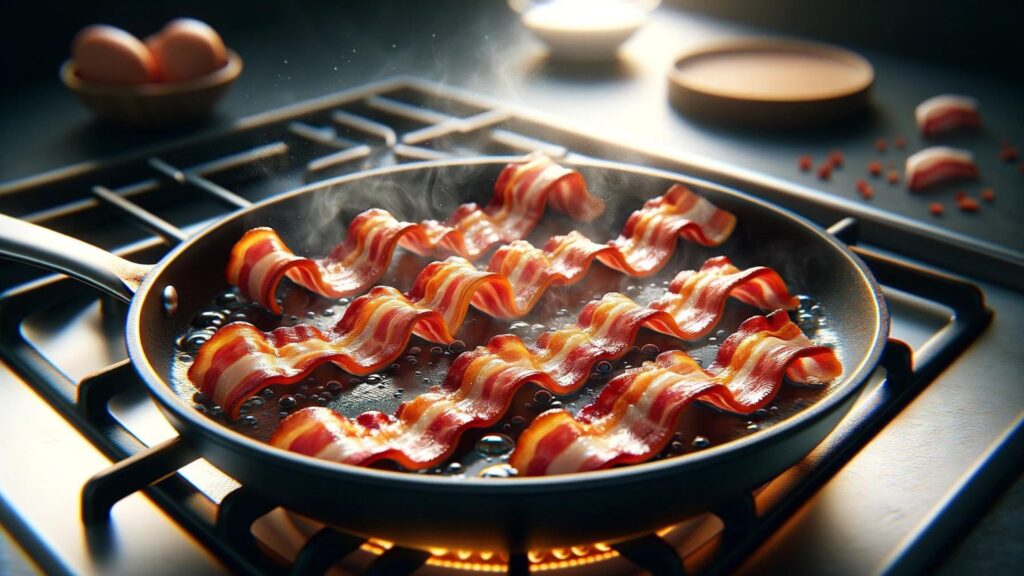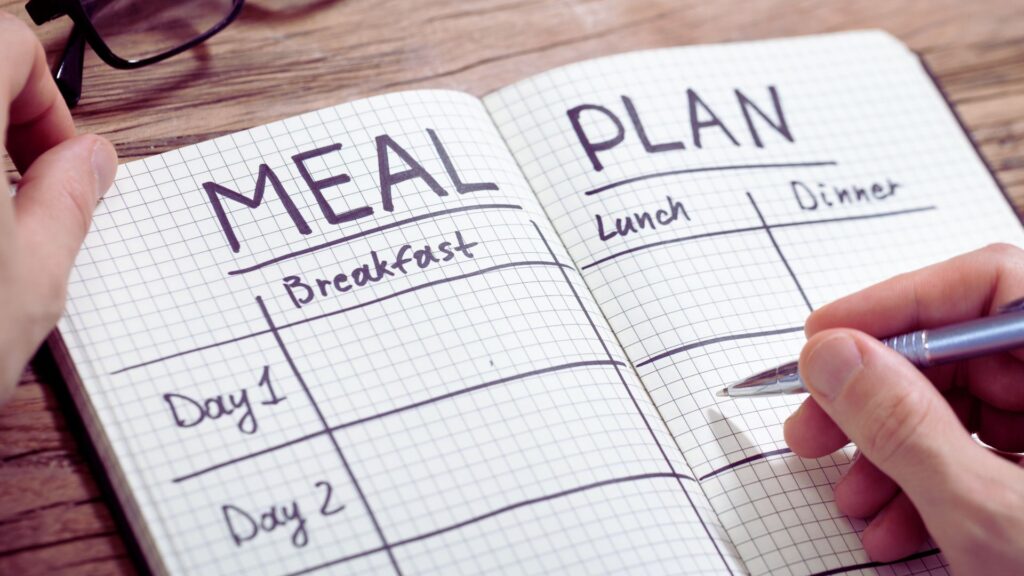Getting started with the Proper Human Diet (PHD) can feel overwhelming at first. But don’t worry – with some smart planning and shopping strategies, you’ll be well on your way to embracing this low-carb, meat-focused way of eating. This guide will walk you through the essentials of meal planning and grocery shopping for the PHD, helping you make informed choices and stick to your new eating habits.
5 Steps to Successful Meal Planning on the Proper Human Diet
- Take inventory of your kitchen
- Plan your meals for the week
- Create a shopping list based on your meal plan
- Shop strategically (perimeter first, then aisles)
- Prep ingredients in advance for easier cooking
Daily Calorie & BMI Calculator
Understanding the Basics of the Proper Human Diet
Before we dive into meal planning and shopping, let’s quickly recap the key principles of the PHD:
- Focus on high-quality meats and animal fats
- Eliminate grains, sugars, and processed foods
- Include limited amounts of low-carb vegetables
- Prioritize whole, unprocessed foods
With these guidelines in mind, let’s explore how to effectively plan your meals and stock your kitchen.
Step-by-Step Meal Planning for the PHD

1. Assess Your Needs
Start by considering your personal requirements:
- How many people are you feeding?
- Do you have any specific health goals or dietary restrictions?
- What’s your budget?
- How much time can you dedicate to meal prep?
2. Choose Your Protein Sources
The cornerstone of your PHD meals will be high-quality animal proteins. Some options include:
- Beef (grass-fed if possible)
- Pork
- Chicken
- Fish (wild-caught preferred)
- Eggs
- Lamb
- Organ meats (for nutrient density)
Aim to include a variety of protein sources throughout the week to ensure a broad spectrum of nutrients.
3. Plan Your Meals
Create a weekly meal plan that includes breakfast, lunch, dinner, and snacks. Here’s a sample day:
- Breakfast: Bacon and eggs with avocado
- Lunch: Leftover roast chicken with a side salad
- Dinner: Grass-fed beef steak with sautéed mushrooms
- Snack: Pork rinds or beef jerky
Remember to keep your meals simple, especially when starting out. As you become more comfortable with the diet, you can experiment with more complex recipes.
4. Make a Shopping List
Based on your meal plan, create a detailed shopping list. Organize it by store sections (meat, produce, etc.) to make your shopping trip more efficient.
Smart Shopping for the Proper Human Diet

Finding Affordable, High-Quality Animal Products
- Buy in bulk: Many butchers and farmers offer discounts for bulk purchases. Consider splitting large orders with friends or family.
- Explore local farms: Direct-to-consumer sales from local farms can offer better prices and higher quality meat.
- Look for sales: Keep an eye out for sales at your local grocery stores and stock up when prices are low.
- Consider less popular cuts: Organ meats and tougher cuts are often cheaper but still nutritious. Learn to cook these effectively to save money.
- Try online meat delivery services: Companies like ButcherBox or Crowd Cow often have competitive prices for high-quality meats.
Dr. Berry’s Proper Human Diet
🥩🥗Eat Real Foods
Focus on whole, nutrient-dense foods that nourish your body.
🥑🧈Embrace Healthy Fats
Include high-quality animal fats in your diet; fat is not the enemy.
🚫🍬Ditch Processed Foods
Eliminate sugars, grains, and processed items for better health and metabolic function.
Shopping Tips for Success
- Shop the perimeter: Most whole foods are found along the outer edges of the grocery store.
- Read labels carefully: Even seemingly innocent products can contain hidden sugars or additives.
- Choose frozen vegetables: They’re often cheaper and just as nutritious as fresh ones.
- Don’t shop hungry: This helps prevent impulse buys of non-PHD compliant foods.
- Invest in storage containers: Proper storage extends the life of your fresh and cooked foods.
Creating a Weekly Meal Plan
Here’s a sample weekly meal plan to get you started:
Monday
- Breakfast: Scrambled eggs with spinach and bacon
- Lunch: Tuna salad lettuce wraps
- Dinner: Pan-seared salmon with asparagus
Tuesday
- Breakfast: Keto coffee (coffee blended with grass-fed butter and MCT oil)
- Lunch: Leftover salmon with a side salad
- Dinner: Slow-cooker pot roast with carrots (limit carrot intake)
Wednesday
- Breakfast: Sausage and egg muffins (made ahead)
- Lunch: Chicken Caesar salad (skip the croutons)
- Dinner: Grilled ribeye steak with sautéed mushrooms
Thursday
- Breakfast: Bacon and avocado
- Lunch: Leftover pot roast
- Dinner: Baked chicken thighs with roasted Brussels sprouts
Friday
- Breakfast: Keto smoothie (unsweetened almond milk, protein powder, spinach, and berries)
- Lunch: Egg salad in lettuce cups
- Dinner: Burger patties topped with cheese and bacon (no bun)
Saturday
- Breakfast: Omelet with cheese and ham
- Lunch: Cobb salad
- Dinner: Grilled pork chops with zucchini noodles
Sunday
- Breakfast: Keto pancakes (made with almond flour)
- Lunch: Leftover pork chops with a side salad
- Dinner: Slow-cooker beef stew (with minimal root vegetables)
Meal Prep Strategies

Meal prep can be a game-changer when following the PHD. Here are some tips to make your week easier:
- Batch cook proteins: Grill several chicken breasts or cook a large roast on Sunday to use throughout the week.
- Prep vegetables in advance: Wash, chop, and store vegetables for easy use during the week.
- Make grab-and-go snacks: Prepare hard-boiled eggs, cut cheese cubes, or portion-out nuts for quick snacks.
- Use your freezer: Cook large batches of PHD-friendly meals and freeze portions for busy days.
- Invest in quality food storage: Good containers keep your prepped food fresh longer.
Eating Out
Dining out can be tricky on the PHD, but it’s not impossible. Here are some tips:
- Choose meat-based dishes and ask for extra vegetables instead of starches
- Request sauces and dressings on the side (many contain hidden sugars)
- Don’t be afraid to ask for modifications to menu items
- Consider bringing your own PHD-friendly condiments
Dealing with Cravings
Cravings for non-PHD foods are common, especially in the beginning. Try these strategies:
- Stay hydrated
- Ensure you’re eating enough fat to feel satisfied
- Keep PHD-friendly snacks on hand
- Find PHD versions of your favorite foods (e.g., cauliflower rice instead of regular rice)
Social Situations
Social events can be challenging when you’re following a specific diet. Here’s how to handle them:
- Eat before you go to events centered around food
- Bring a PHD-friendly dish to share
- Focus on socializing rather than eating
- Be open about your dietary choices to avoid awkward situations
Sustainability and the PHD
While the PHD focuses heavily on animal products, it’s possible to make more sustainable choices:
- Choose grass-fed and pasture-raised meats when possible
- Support local farmers and ranchers
- Consider incorporating some sustainably sourced fish into your diet
- Use all parts of the animal (including organ meats and bones for broth) to reduce waste
Tracking Your Progress
As you embark on your PHD journey, it’s helpful to track your progress. Consider:
- Keeping a food diary
- Taking regular body measurements
- Monitoring your energy levels and mood
- Getting periodic blood work to check your health markers

Conclusion
Starting the Proper Human Diet
🌱Start Small
Begin with gradual changes. Consistency is key, and it’s okay to start small and build up over time.
📝Plan and Prepare
Use thoughtful meal planning and smart shopping strategies to successfully transition to this way of eating.
🥗Lifestyle Change
The PHD is more than just a diet – it’s a lifestyle change that many find beneficial for their health and well-being.
👨⚕️Consult a Professional
Always consult with a healthcare professional before making significant changes to your diet, especially if you have pre-existing health conditions.
Happy planning and shopping on your Proper Human Diet adventure!


